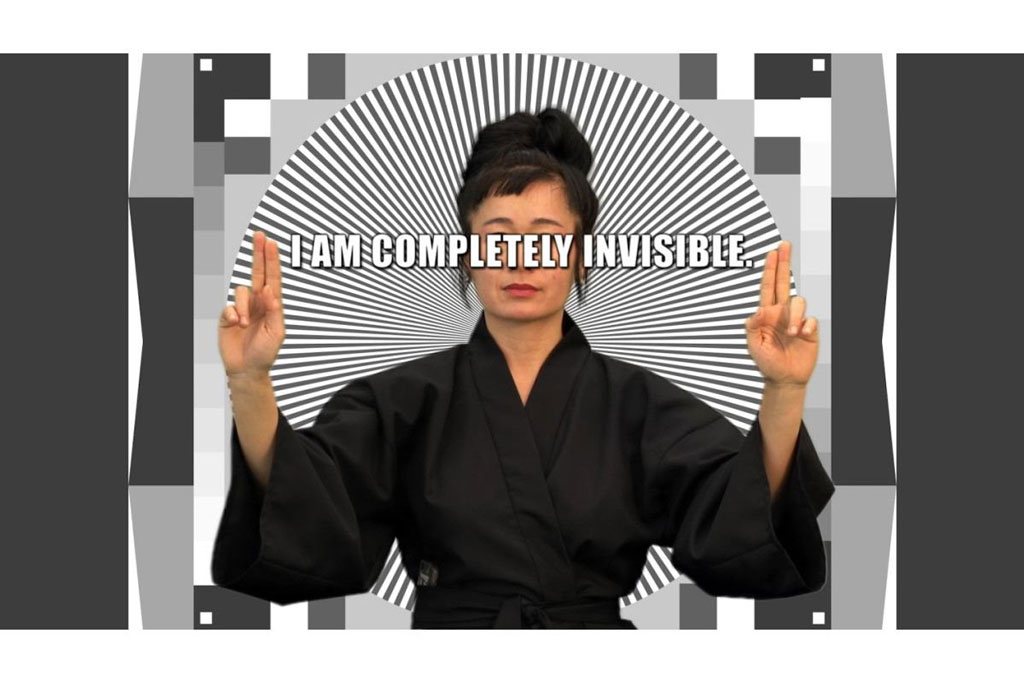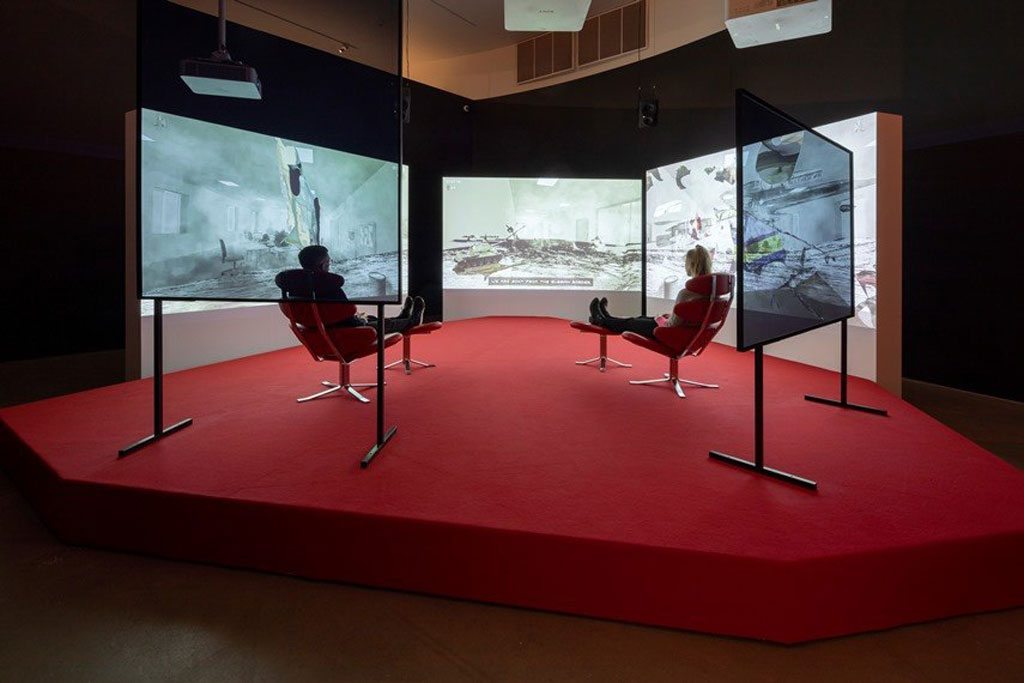ART CITIES:London-Harun Farocki & Hito Steyerl
![]() Harun Farocki and Hito Steyerl are bound by a special form of collaboration, beyond any space-time framework. Though they belong to quite different generations they share a stubborn critical attitude that dismantles the pervasive biopolitical regimes of late capitalism. When there is no hope for a better world their images open up a crack in the system of art, no matter how discredited it might be. Call it the pragmatism of the hopeless.
Harun Farocki and Hito Steyerl are bound by a special form of collaboration, beyond any space-time framework. Though they belong to quite different generations they share a stubborn critical attitude that dismantles the pervasive biopolitical regimes of late capitalism. When there is no hope for a better world their images open up a crack in the system of art, no matter how discredited it might be. Call it the pragmatism of the hopeless.
By Efi Michalarou
Photo: Galerie Thaddaeus Ropac Archive
The exhibition “Life Captured Still” makes a strong parallel between Harun Farocki and Hito Steyerl, two crucial and at their time pioneering authors that explore our reality from a critically charged perspective in an attempt to broaden a dialog on painful issues concerning labor, power structures, media, military, and surveillance technologies and global circulation of images. Harun Farocki’s entire oeuvre although critically acclaimed is often marginalized, so the exhibition offers a well-navigated insight in his approach to motion pictures accompanied by a dialog with intriguing pieces by Hito Steyerl. The exhibition presents Steyerl’s films, “November” (2004) and “Lovely Andrea” (2007), examining the ways in which images circulate beyond their original purposes, accumulating fictional meanings and becoming lost to their original subjects. Amassing an eclectic array of sources, Steyerl’s films combine unlikely findings from her ongoing research practice with fragments of found footage to highlight and build upon the central themes and narratives. Both films are linked to the artist’s teenage friend, Andrea Wolf. Having joined the PKK Kurdistan Workers’ Party), Wolf was killed by Turkish police following her arrest in northern Iraq in 1998, and her body disappeared without a trace. Wolf’s image has since become an icon of martyrdom, displayed on posters at Kurdish protests, posters which Steyerl draws upon in her film to consider the ongoing transformation(s) of both Wolf the person, and Wolf the image: the fictional image of a character that circulates and transforms amongst the masses. Elsewhere in the exhibition, Farocki’s early video work, “Two Paths” (1966) also uses the camera as a tool for the dissection of an image: roaming close-up shots of a drawing deconstruct the scene it presents a religious allegory for right and wrong, alluding to the subjective, perspective-reliant nature of meaning and the instructional power of the image. Underscored by rhymes, Farocki’s methodological approach to the camera in this short video functions as a precursor to his later essay films and highlights the enduring themes at the heart of the artist’s practice. The exhibition also includes the installation and ongoing workshop, “Labour in a Single Shot” (2011- ), a collaboration between the late Farocki and his partner, curator Antje Ehmann. Working as a team of like-minded producers, Farocki and Ehmann have collaborated on a number of artistic and curatorial projects since the late 1990s. For this last collaboration, the pair returned to the beginning of film history. Adopting the straightforward objectivity of early cinema, with reference to the Lumière brothers’ “La Sortie de l’usine Lumière à Lyon” (1895), a single-take film that features workers leaving a factory in Lyon, the extensive project uses the methodology of the single camera shot to explore the subject of labour. Over the course of four years, they travelled to fifteen major cities where they produced over four hundred short films with local video artists and filmmakers. The project recently resumed, producing more than one hundred additional films over the past three years. These films show forms of work that are paid and unpaid, material and immaterial, traditional and brand-new, industrial and pre-industrial. They visualise work in the 21st century from a double perspective: as an individual act, but set in the midst of collective constraints. Further delving into the notion of labour, and in direct homage to the Lumière brothers, Farocki’s 2006 installation, “Workers Leaving the Factory in Eleven Decades” is presented as an immersive and totalising experience alongside “Comparison via a Third” (2007), “The Silver and the Cross” (2010) and the large installation “Re-Pouring” (2010). In cinematography, perception and concept diverge; Farocki plays on this by offering multiple beginnings, ranging from a single screen to a twelve-monitor work that simultaneously presents scenes of workers leaving a factory drawn from different periods of twentieth-century film history. Farocki multiplies the exits and, in turn, the worlds of labour, transforming the workers into actors who play themselves. Steyerl’s three-channel installation “The Tower” (2015-16) extends Farocki’s concerns with the portrayal of labour, as-image to explore the role of digital technologies in the dissemination of information itself.
Info: Curator: Antje Ehmann, Galerie Thaddaeus Ropac, Ely House, 37 Dover Street, London, Duration: 6/2-4/4/20, Days & Hours: Tue-Sat 10:00-18:00, https://ropac.net
![Harun Farocki, The Silver and the Cross / La Plata y la Cruz) [still], 2010, Double channel installation, sound, colour, 17 minutes, © Harun Farocki GbR, Courtesy Harun Farocki GbR and Galerie Thaddaeus Ropac](http://www.dreamideamachine.com/web/wp-content/uploads/2020/02/Harun-Farocki-Te-Silver-and-the-Cross.jpg)


![Harun Farocki, Vergleich über ein Drittes / Comparison via a Third [still], 2007. Double channel installation, sound, colour, 24 minutes, © Harun Farocki GbR, Courtesy Harun Farocki GbR and Galerie Thaddaeus Ropac](http://www.dreamideamachine.com/web/wp-content/uploads/2020/02/Ropac-Harun-Farocki.jpg)
